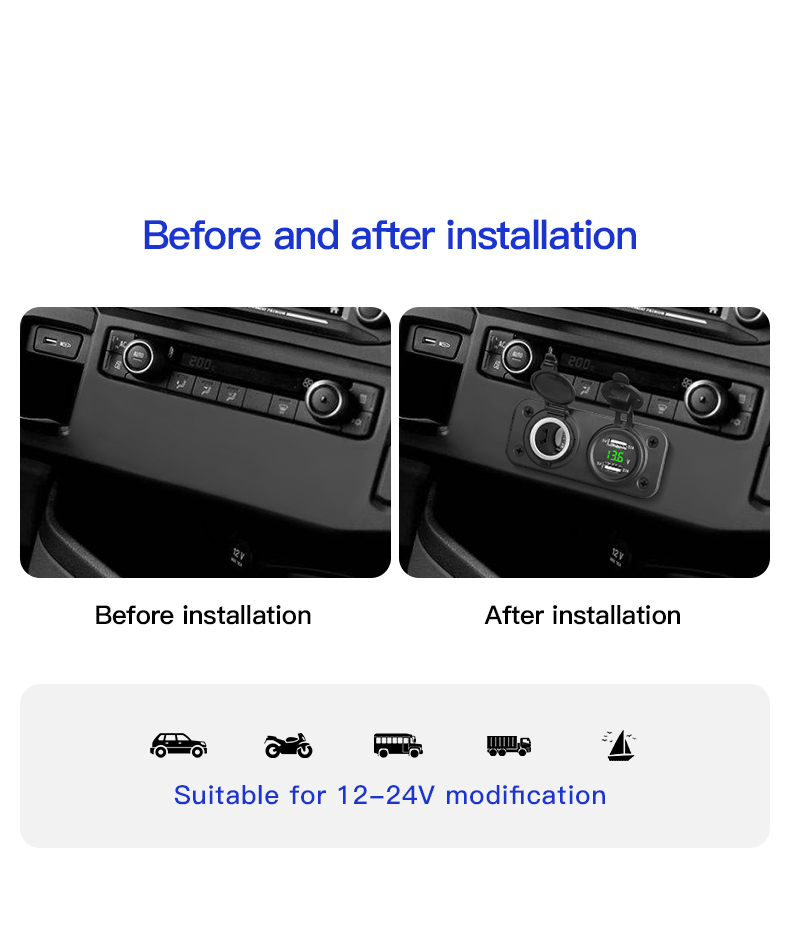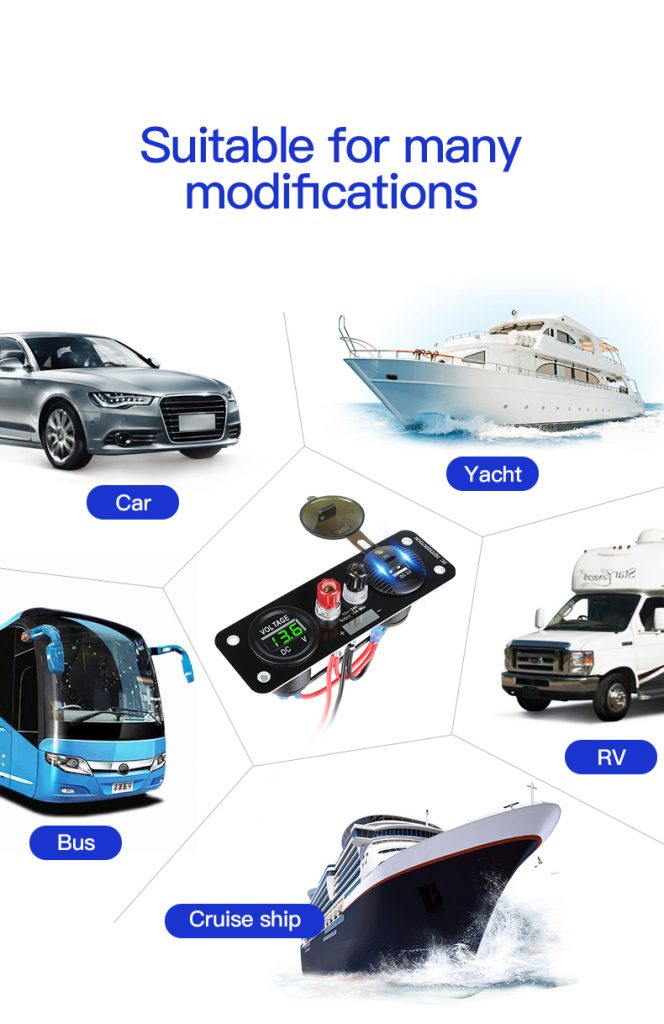What is a cigarette lighter socket?
A cigarette lighter socket, also known as a car lighter socket or a 12-volt auxiliary power outlet, is a standard feature in most automobiles. It is a small receptacle that is typically located in the dashboard, center console, or in the rear of the vehicle, and it is designed to provide a power source for portable electronic devices or accessories that are designed to be used in a vehicle.
Power a cigarette lighter with cigarette lighter socket
The cigarette lighter socket gets its name from its original intended use – to power a cigarette lighter. In the early days of the automobile, cigarette lighters were a popular accessory that allowed drivers and passengers to light cigarettes while on the go. The cigarette lighter was a simple device that consisted of a heating element that was powered by the vehicle’s electrical system. The driver or passenger would insert the lighter into the cigarette lighter socket, and when it was heated to the appropriate temperature, they could use it to light their cigarette.
Over time, the cigarette lighter socket has evolved to serve a wider range of purposes. Today, it is a common power source for a variety of portable electronic devices, including smartphones, tablets, GPS devices, and portable music players. It is also used to power devices such as air purifiers, portable coolers, and chargers for electronic devices.
Charging devices with cigarette lighter socket
The cigarette lighter socket is a convenient way to power devices in a vehicle, as it does not require any special installation or wiring. All that is needed is a device with a compatible plug, such as a car charger for a smartphone or a portable GPS device. These devices typically have a standard 12-volt DC plug that can be inserted into the cigarette lighter socket. Once the device is plugged in, it can be powered by the vehicle’s electrical system.
The cigarette lighter socket is typically rated for a maximum current of 15 amps. This means that it is capable of powering devices that draw up to 15 amps of current. However, it is important to note that the socket is not designed to power devices that require more current than this, as it could potentially cause damage to the vehicle’s electrical system.
The advantages of the cigarette lighter socket
One of the main advantages of the cigarette lighter socket is that it is a standard feature in most vehicles, which means that it is widely available and easy to use. It is also a relatively inexpensive way to power devices in a vehicle, as it does not require any special installation or wiring.
The drawbacks of cigarette lighter socket plug
There are, however, a few drawbacks to using the cigarette lighter socket to power devices in a vehicle. One of the main drawbacks is that the socket is only powered when the vehicle’s engine is running. This means that if the vehicle is turned off, the device will no longer be powered. This can be inconvenient if the device is being used for an extended period of time, as it will need to be plugged in again when the vehicle is started.
Another drawback of the cigarette lighter socket is that it is not always the most reliable power source. The socket can become loose over time, which can cause the device to become disconnected or stop working. It is also possible for the socket to become damaged, which can prevent it from working properly.
Despite these drawbacks, the cigarette lighter socket remains a popular and convenient way to power devices in a vehicle. It is a simple and reliable way to keep devices charged and powered while on the go, and it is a feature that is found in most automobiles.

Are all cigarette lighter socket are the same?
Not all cigarette lighter sockets are the same. There are several different types of cigarette lighter sockets, and they can vary in terms of their size, shape, and the type of plug that they accept.
Standard 12v socket for cigarette lighter socket plug
One of the most common types of cigarette lighter socket is the standard 12-volt socket, which is found in most cars, trucks, and other vehicles. These sockets are typically round, with a diameter of about 19mm, and they are designed to accept a standard 12-volt plug.
USB socket for the cigarette lighter socket
Another type of cigarette lighter socket is the USB socket, which is becoming increasingly common in vehicles. These sockets are typically rectangular, and they are designed to accept USB plugs, allowing you to charge your USB devices while you’re on the go.
24v socket for cigarette lighter socket
There are also other types of cigarette lighter socket, such as the 24-volt sockets that are found in some heavy-duty vehicles, as well as specialty sockets for things like heated clothing and GPS devices.
In general, it’s important to make sure that you have the right type of cigarette lighter socket for your specific needs. For example, if you’re trying to charge a device with a USB plug, you’ll need to make sure that you have a USB socket in your vehicle, rather than a standard 12-volt socket.
In summary, not all cigarette lighter sockets are the same, and it’s important to know which type of socket you need in order to charge your devices while you’re on the go.

What size is a cigarette lighter socket plug?
Depending on the type of cigarette lighter socket
The size of a cigarette lighter socket plug can vary depending on the type of socket that it is designed for. The most common type of cigarette lighter socket is the standard 12-volt socket, which is found in most cars, trucks, and other vehicles. These sockets are typically round, with a diameter of about 19mm, and they are designed to accept a standard 12-volt plug.
Other types of cigarette lighter socket plugs can vary in size depending on the type of socket that they are designed for. For example, the plugs for USB sockets are typically rectangular, while the plugs for specialty sockets like those used for heated clothing or GPS devices may have a unique shape.
In general, it’s important to make sure that you have the right type of cigarette lighter socket plug for your specific needs. This will ensure that your devices are able to charge properly, and it will also help to prevent any damage to your socket or your device.
